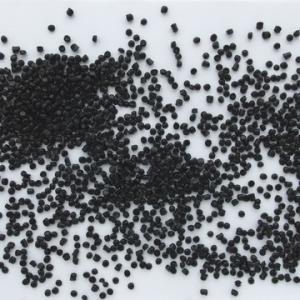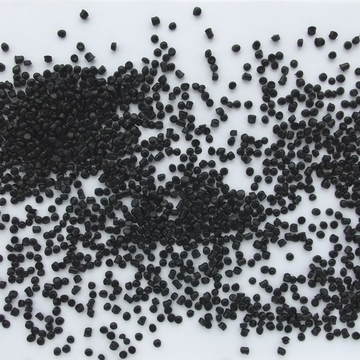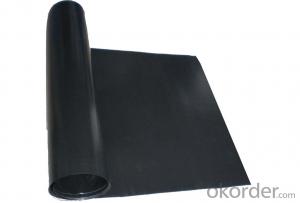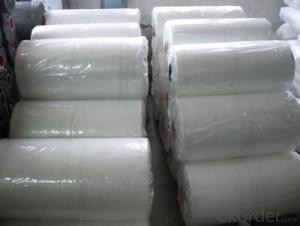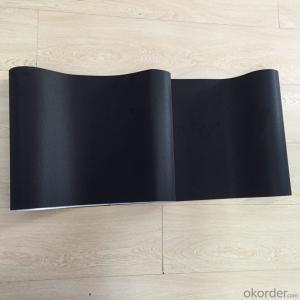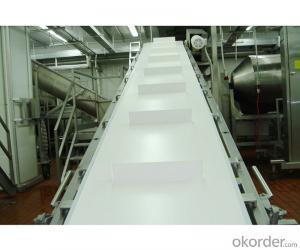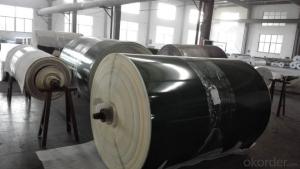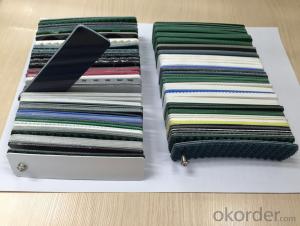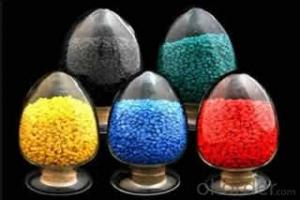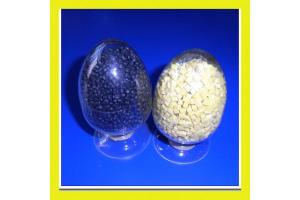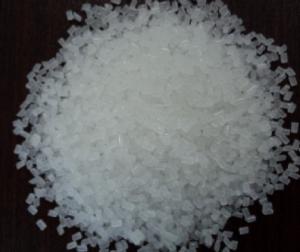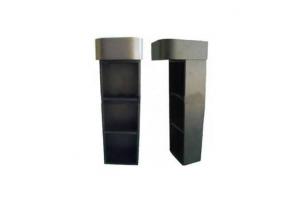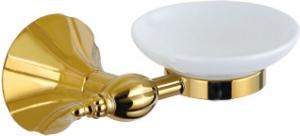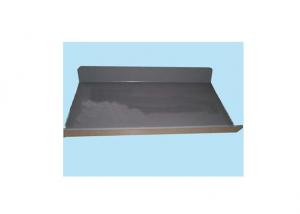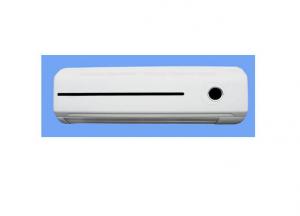Semiconducting PE Jacketing Compound for High Voltage Cable
- Loading Port:
- Shanghai
- Payment Terms:
- TT OR LC
- Min Order Qty:
- -
- Supply Capability:
- 3000 Tons kg/month
OKorder Service Pledge
OKorder Financial Service
You Might Also Like
Semiconducting PE Jacketing Compound for High Voltage Cable
I. Type andapplication
Type | Product | Application |
EB-35A | Semiconducting PE Jacketing Compound for High Voltage Cable | Applying to high voltage cables and other area cables as jacketing compound |
EBZ-35A | Semiconducting flame retardant PE Jacketing Compound for High Voltage Cable | Applying to high voltage cables and other area cables as flame retardant jacketing compound |
II. Product description
These products used macromolecule PE materials as basematerials, and added other additivers. It is designed for high voltage cablesspecially, which suited to thin wall double co-extrusion processing conditionas thermoplastic semiconducting jacketing compound. It has very goodconductive, thermal conductivity, dispersivity, and excellent extrudingproperties, and etc.
III. Processing
Use single screwextruder to process, suggest to put one layer 60/80 strainer.
The followingtemperature(℃) profile of extruder is recommended:
Zone | Zone 1 | Zone 2 | Zone 3 | Zone 4 | Zone 5 | head | Die1 | Die2 | Die3 |
Temperature ℃ | 140 | 150 | 155 | 165 | 165 | 160 | 163 | 165 | 168 |
Note:Above information just for you refer, please adjust it according to equipmentconditions and extruding situation.
IV. Storage and transport
Packaging:25kg/bag,Aluminum foil vacuum and moistureproofinside bag and complex Kraft outside bag.
Storage and transport: Avoiding in directsunlight and weathering. The storage place should be in clean, cool, dry, andventilated conditions.
V. Properties
Table
Item | Unit | Standard Value | |
EB-35A | EBZ-35A | ||
Volume Resistivity, at 23℃ | ≤Ω﹒cm | 100 | 100 |
Melt Flowing Index | ≤g/10min | 1.0 | 1.0 |
Density | ≤g/cm3 | 1.15 | 1.25 |
Tensile Strength | ≥MPa | 13.0 | 12.0 |
Elongation at Break | ≥% | 400 | 400 |
Impact Brittleness in low temp. | ≤℃ | -45 | -45 |
Resistance to Environmental Stress Crack F0 | ≥h | 500 | 500 |
Oxygen Index | ≥ % | - | 28 |
- Q: How long do olive nets last?
- The lifespan of olive nets can vary depending on factors such as the quality of the net, frequency of use, and maintenance. However, on average, olive nets can last anywhere from 3 to 5 years if properly cared for.
- Q: Can olive nets be used for both traditional and high-density olive groves?
- Yes, olive nets can be used for both traditional and high-density olive groves. Olive nets are versatile and can be adapted to different types of olive groves. They are commonly used to protect the olives from birds and other animals, as well as to facilitate the collection of the harvested fruits. Whether it is a traditional grove with wider spacing between trees or a high-density grove with closer spacing, olive nets can be employed effectively in both cases.
- Q: Can olive nets be used for olive tree grafting?
- No, olive nets cannot be used for olive tree grafting. Grafting requires specific tools and techniques to join the desired scion with the rootstock, while olive nets are used to cover the trees and protect the olives from birds or other animals.
- Q: Do olive nets require any special tools for installation?
- Yes, olive nets typically require special tools for installation. These tools can include poles, clips, or hooks to secure the net in place and ensure proper coverage over the olive trees.
- Q: How do olive nets affect the overall growth of olive trees?
- Olive nets can have a positive impact on the overall growth of olive trees. These nets are primarily used to protect the olives from birds and other pests, allowing them to fully mature and develop. By preventing damage and loss of olives, the trees can allocate more resources towards growth and fruit production. Additionally, olive nets can also provide shade and protection from extreme weather conditions, creating a more favorable environment for tree growth.
- Q: Are olive nets easy to remove after harvest?
- Yes, olive nets are generally easy to remove after harvest. They are designed to be lightweight and flexible, allowing for easy handling and removal. Additionally, most olive nets come with convenient features such as easy-to-use fasteners or clips, making the removal process relatively quick and hassle-free.
- Q: How do olive nets prevent insect damage to olives?
- Olive nets prevent insect damage to olives by physically blocking insects from accessing the fruit. The nets are spread over the olive trees, creating a barrier that prevents insects from reaching the olives and laying eggs or feeding on them. This helps to protect the olives and maintain their quality, minimizing the risk of insect-related damage or infestation.
- Q: Can olive nets be used for olive trees in cold climates?
- No, olive nets are typically used to protect olives from birds and other pests during the fruiting season, rather than for protection against cold climates. Cold climates can cause frost damage to olive trees, and it is recommended to use other methods such as wrapping the tree or using frost blankets to protect them in such conditions.
- Q: Can olive nets be used to reduce the risk of soil erosion in areas with high rainfall?
- Yes, olive nets can be used to reduce the risk of soil erosion in areas with high rainfall. Olive nets act as a protective cover over the soil, preventing the impact of heavy raindrops and reducing the velocity of runoff water. This helps to retain moisture in the soil, minimize soil compaction, and prevent the loss of topsoil. Additionally, olive nets can also help to control the movement of sediment and prevent it from being washed away by the rainwater, thus effectively reducing soil erosion in areas with high rainfall.
- Q: Can olive nets be used in combination with shade nets?
- Yes, olive nets can be used in combination with shade nets. Olive nets are primarily used to protect the olives from birds and other pests, while shade nets are used to provide shade and regulate temperature in agricultural settings. By using both nets together, olive trees can be protected from pests while still benefiting from the shade provided by the shade net.
Send your message to us
Semiconducting PE Jacketing Compound for High Voltage Cable
- Loading Port:
- Shanghai
- Payment Terms:
- TT OR LC
- Min Order Qty:
- -
- Supply Capability:
- 3000 Tons kg/month
OKorder Service Pledge
OKorder Financial Service
Similar products
Hot products
Hot Searches
Related keywords
